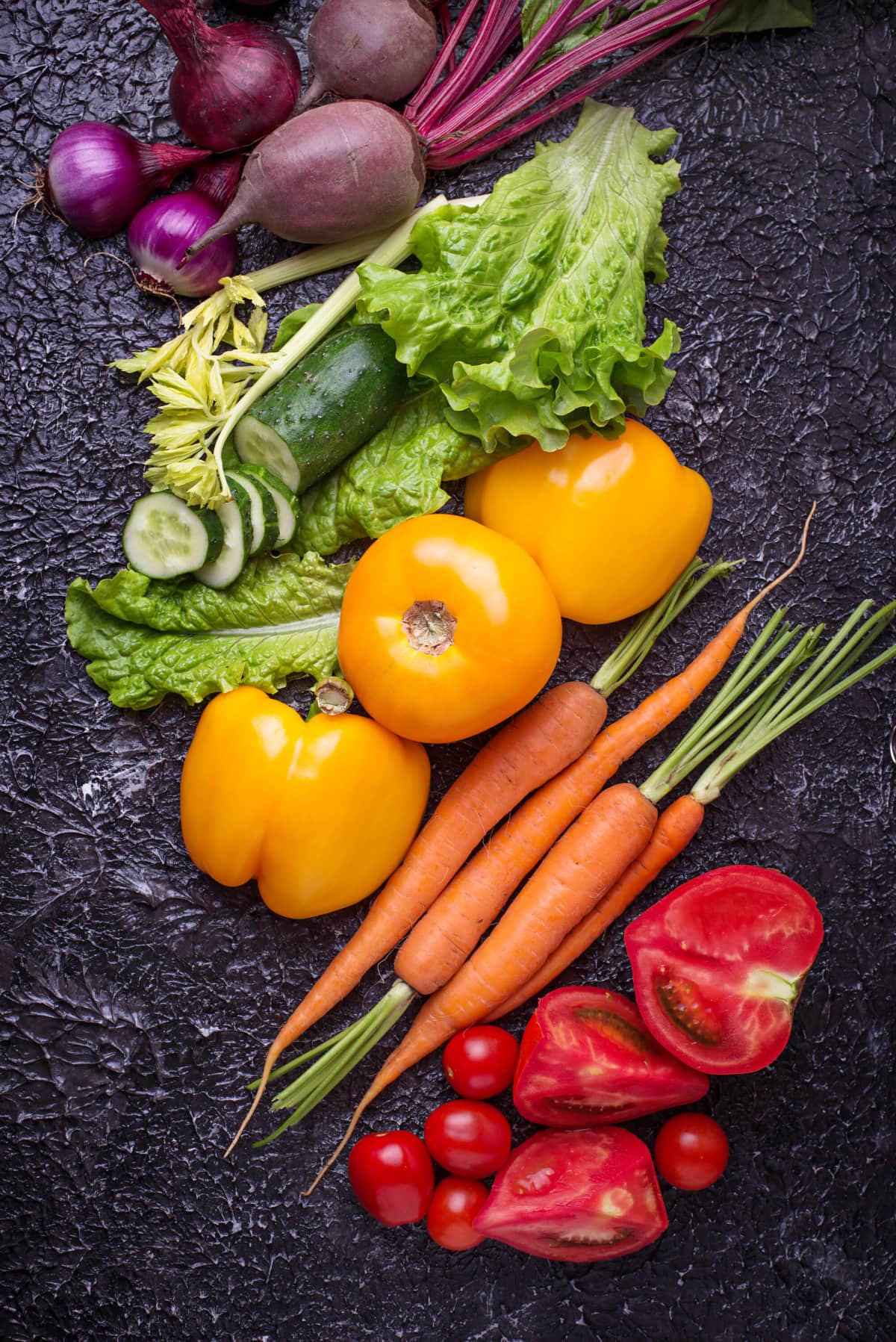
It is well known that sodium intake can lead to serious health consequences. A person's sodium intake is directly related to their risk of developing hypertension and cardiovascular disease. Salt intake should be reduced by limiting salty snacks as well as reducing salt added to meals. It is important to reduce your intake of sodium from processed foods and fast food. Below are some suggestions for reducing sodium intake.
Your water retention will be increased by increasing the sodium content in your bloodstream. This causes your bloodstream to expand, and it will expand. The risk of developing heart disease is increased when blood vessels are over saturated. Plaque can build up and stretch, making them more vulnerable to damage. Your body will feel bloated if you consume too much sodium. There are many health effects that too much sodium can have on your body. It is crucial to limit your sodium intake to avoid developing serious health problems.

Too much sodium is bad for your health. Too much sodium can lead to problems in your health. Studies have linked diets high in sodium with an increased risk of high blood pressure. Although sodium is vital for nerve and muscle function, and to regulate body fluids it is best to reduce your intake. It's best to keep your daily total below two thousand milligrams.
Too much sodium can not only affect the brain but also cause problems with the heart. High sodium diets in the United States are associated with increased risk for developing cardiovascular disease. The Centers for Disease Control and Prevention recommend that Americans consume no more than 1,500 milligrams of sodium per day. This number should be lower than two thousand milligrams per day for most people. There are however foods that have higher sodium levels than others.
It is important that sodium intake does not affect the cardiovascular system. In fact, it can have many health benefits. A person with high blood pressure, for example, should reduce their sodium intake by 2,000 mg daily. Low blood pressure can also be beneficial. Additionally, lowering salt intake can reduce your risk of developing cardiovascular disease. And this is only the beginning. You must reduce sodium intake if you want to reap the health benefits of a healthy lifestyle.

The number of people who die from too much sodium intake is on the rise. High sodium levels are increasing in people with high blood sugar and heart disease. Reducing sodium intake can help reduce your risk of developing cardiac problems. You should avoid salty foods as well as processed foods and salty meals. For instance, canned vegetables and legumes should be rinsed before consumption. If you don’t like washing your vegetables or legumes before eating them, you might try rinsing them first.
FAQ
How Metabolic Health is Key to Aging Well
People live longer today than ever before. However, as they age, so do their chances of getting sicker. Despite making great progress in medical science, it is becoming more apparent that our current approach to medicine is not working.
We must change the way that we look at health and aging. To achieve healthy aging, we must look at metabolic health as more than just weight loss. It is also important to consider overall wellness.
And if you want to live an active life for decades to come, you should ensure that your metabolism stays strong and healthy throughout your entire lifetime.
The good news? There are many things you can do to improve your metabolism. One way to improve your metabolic health is to incorporate these seven foods into your daily diet.
-
Resveratrol has been found to be a key ingredient in blueberries, and it has been shown that it can help increase cell longevity. They also contain vitamins C & E, as well as antioxidants.
-
Pinto beans and lentils make excellent sources of fiber as well as plant-based protein. These nutrients keep blood sugar levels stable so that they don't spike or crash.
-
Broccoli contains sulforaphane, shown in studies to protect cells against DNA damage. It may even be able to slow down cancer progression.
-
Chia Seeds are high-in omega-3 fatty acids, fiber, and other nutrients. They are rich in protein and antioxidants. All of these nutrients are good for heart health, brain function, gut health, and overall health.
-
Green tea contains catechins, which are polyphenols. Studies show that catechins in green Tea can reduce the risk of developing diabetes, stroke, cognitive decline, and bone fractures.
-
Salmonis packed with vitamin D, low in saturatedfat and one of best sources of lean meat.
-
Walnuts are rich in omega-3s as well as antioxidants such alpha lipoic acids (ALA). ALA protects against inflammation and boosts energy production.
What does milk do for men?
Consider what other uses you might have for your milk next time that you buy it. It could also be beneficial to quit drinking coffee.
Milk has been proven to be beneficial to both children and adults alike. Milk is rich in nutrients for children, including vitamin D and calcium.
It also aids digestion, improves bone strength, and promotes weight gain. The immune system is stronger and there are fewer illnesses in adults who consume dairy products.
Lactose is also a major component of milk, so those who are unable to digest it easily can still enjoy the benefits of this sugar without having stomach problems.
Consider drinking more milk, instead of sodas or juices. Your teeth and bones can be strengthened by drinking milk rich in vitamin D and calcium.
Plain low-fat milk can be used to make yogurt if you don’t like the taste. Yogurt, which is lower in calories but higher in protein, is a great option to milk.
Yogurt also contains probiotics, which aid in digestion and improve immunity.
Take a glass warm milk before you go to bed if you are having trouble sleeping. Warm milk helps relax muscles and boosts serotonin levels.
Do weightlifting burn fat faster?
Weight lifting is a great way to burn fat faster but you need to do it together with cardio exercise.
For the best results of weightlifting, do it after cardio exercises.
Weightlifting, when done properly, increases your heart rate.
However, if you don't combine it with cardio you won't see any significant changes to your body composition.
How fast can I transform myself?
You must change your mindset. The first step is to decide to change.
Once you have decided you want to make changes, you will need to commit to your fitness goals at least for 3 months.
Next, you will need to find a program that suits your lifestyle.
Also, you need to set realistic goals. If you are unwilling to put in the time and effort necessary to achieve your goal, don't waste your money on a gym membership.
Instead, spend your free time exercising outdoors.
Walking around the block for an hour per day will help you lose 1 lb in a week.
Once you know what your plan is, it's time to start organizing your life in accordance with this plan.
You should make sure you set aside time each morning to exercise and that you take breaks throughout your day to move.
When you achieve milestones, reward yourself. You can buy accessories and clothes that reflect your success.
Statistics
- By John Thompson Take a whopping 38% off a set of PowerBlock Pros. (menshealth.com)
- An estimated calorie range for moderately active adult males falls between 2,200 to 2,800 calories per day, depending on age. (eatright.org)
- According to the American Academy of Dermatology (AAD), men over 50 are at a heightened risk of developing it. (healthline.com)
- Candidates and applicants must pass all four tests at 70% (minimum level) to graduate from Basic Deputy U.S. Marshal (BDUSM) Training. (usmarshals.gov)
- Cardmembers earn 5% Back at Amazon.com with a Prime Credit Card. (amazon.com)
External Links
How To
How can a man be fit in only 30 days?
Breaking down your fitness goals into manageable steps is the best way to reach your goals.
This is why you should make sure that you're working toward your goal every day. This could be anything from running 3km to doing 10 pushups in 5 minutes.
Consistently doing this will lead to positive results.
Here, consistency is the key. You have to keep at it until you succeed!
What is the difference between Aerobic Fitness (or Anaerobic Fitness)?
Anaerobic fitness is the ability to do intense physical work without oxygen. Anaerobic pathways can be used to supply enough energy during high-intensity exercise. Anaerobic pathways include glycolysis, creatine phosphate, the phosphagen, lactic acid, etc.
Contrary to that, aerobic fitness is the ability to sustain low-intensity exercises for a long time. When doing aerobic exercises, oxygen serves as the primary source for fuel for the cells. In other words: The aerobic pathway gives more energy than that of the anaerobic.
You need to build up your aerobic capability if you plan on running a marathon. If you concentrate on building your anaerobic capability, you won’t be able complete the race.
Aerobic fitness also refers to cardiovascular fitness. The two most commonly used methods of measuring cardiovascular fitness, are VO2 Max testing and step tests.
VO2 Max Testing
The maximum amount of oxygen (O2) the body can use during exercise is called VO2 max. This test measures the amount of O2 the body can utilize while exercising.
This test can measure your cardiovascular fitness accurately. It requires expensive equipment and highly-trained professionals to administer.
Step Tests
Step tests are a quick and easy way to test your cardiovascular fitness. These are based on your weight and age, they require you to run or walk on a track.
These tests can be conducted almost anywhere and are cheap, simple, and easy. You could, for instance, run on a treadmill for two minutes, rest for one minute, and then go back to the starting point for 20 minutes. You should maintain a constant heart rate throughout the session.
This method is known by the "Bruce Protocol". Bruce, himself a runner developed this protocol when he realized his heart rate didn't rise when he ran long distances.